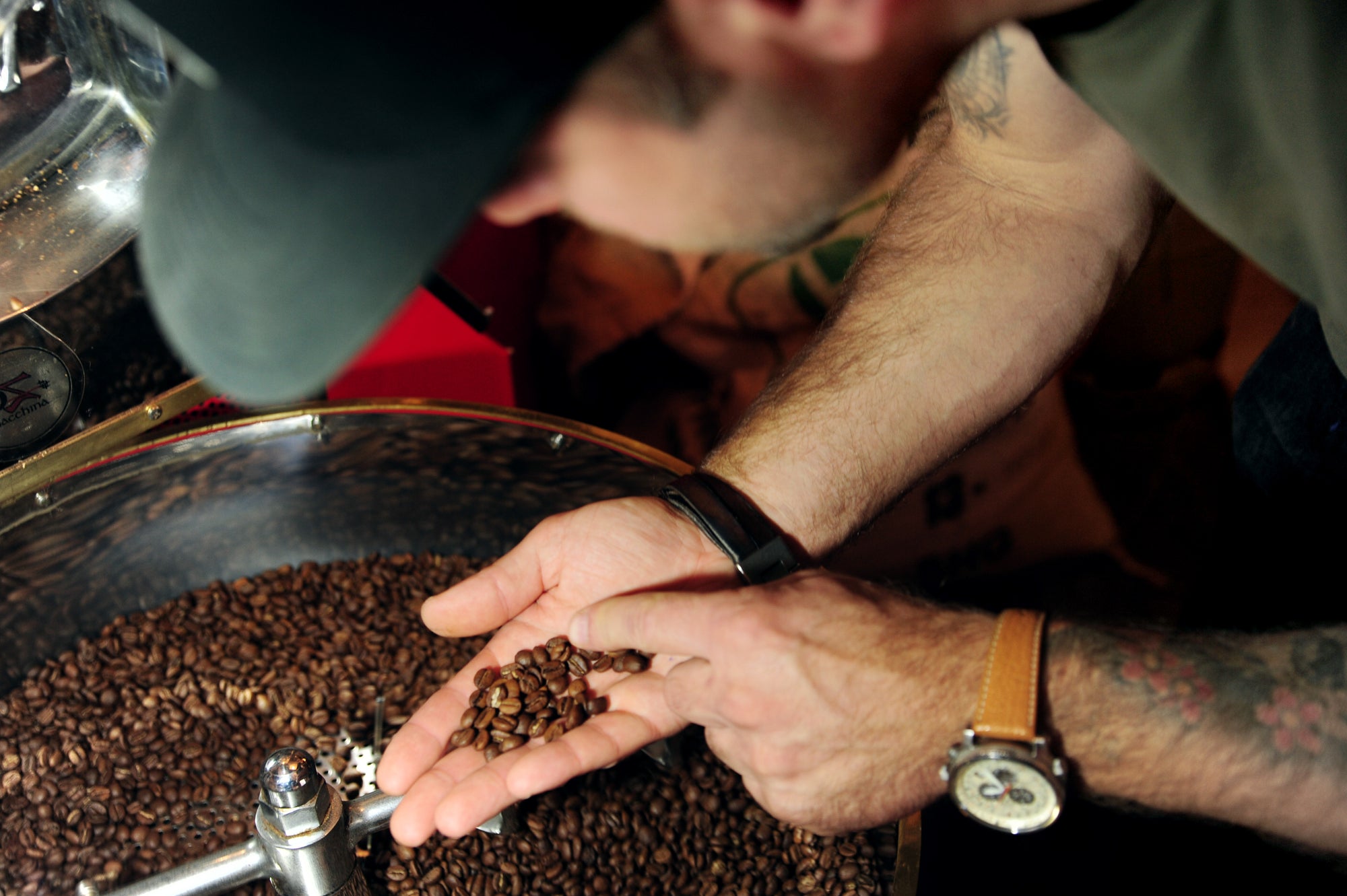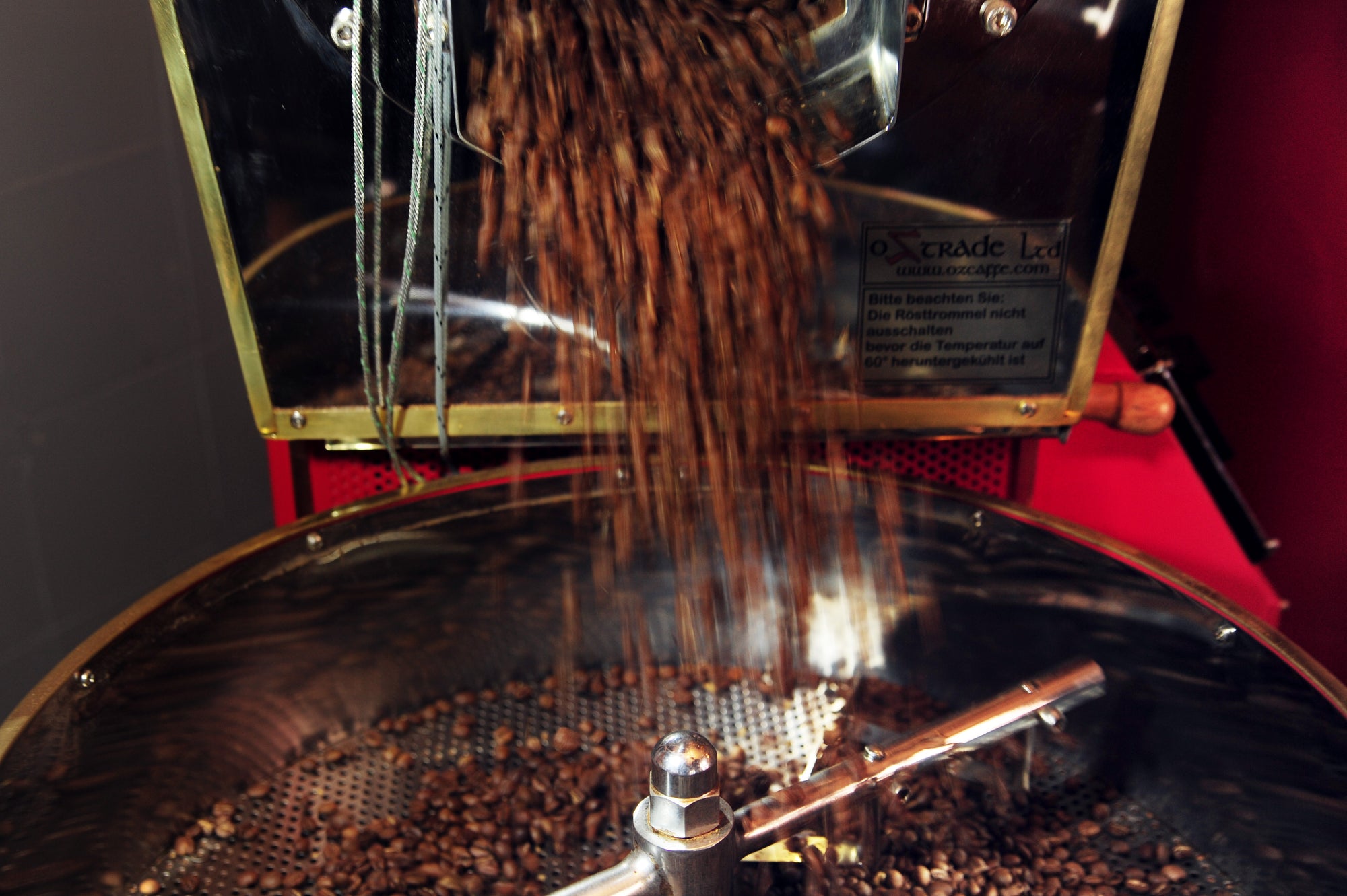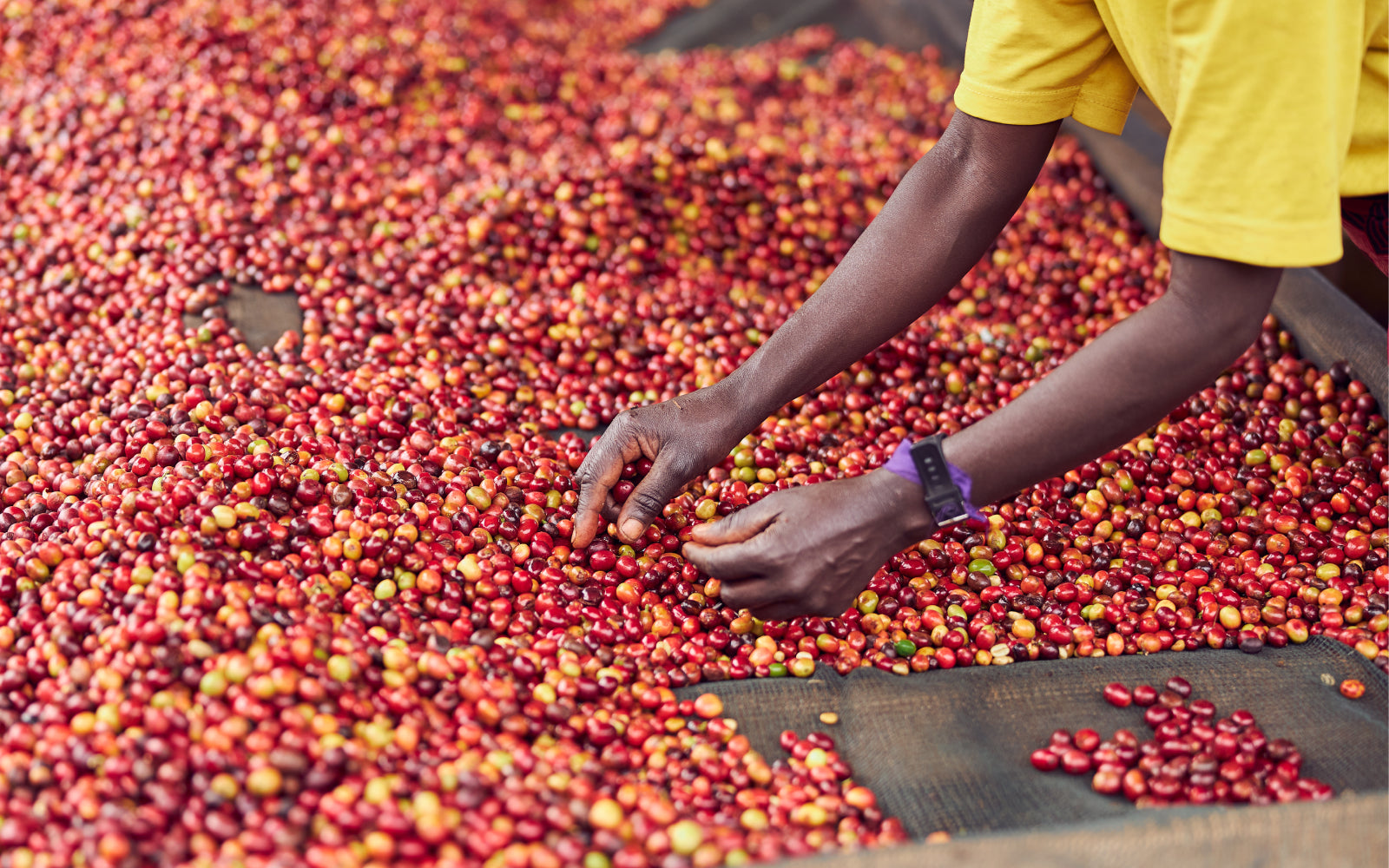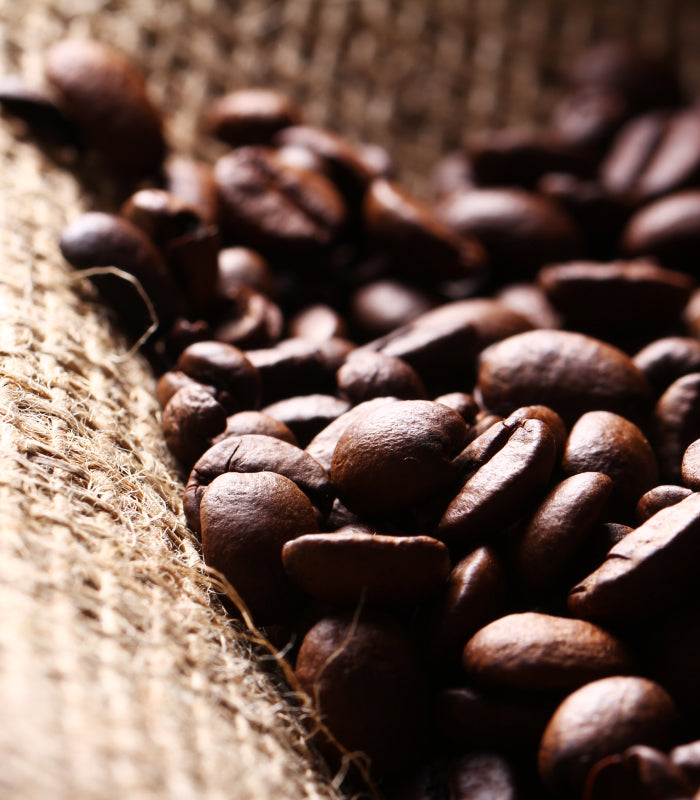What does coffee roasting actually mean?
Coffee roasting is the fascinating process of transforming green coffee beans by heating them to high temperatures. This transformation is both physical and chemical, resulting in the complex flavor profiles and aromas enjoyed in a cup of coffee. During roasting, the coffee beans evolve in color, aroma, flavor, and density, and this process is crucial for unlocking the beans' true flavors.
Physical and chemical changes
During roasting, the coffee beans undergo several physical and chemical changes:
Physical changes:
- Color: The green beans change their color from green to yellow to brown. This is due to the Maillard reaction, in which amino acids and sugars react with each other.
and cause tanning. - Size and density: The beans expand and become larger while their density decreases. This is due to the moisture in the beans evaporating and the interior of the bean becoming more porous.
- Weight: The beans lose about 12-20% of their weight due to moisture loss and the breakdown of organic compounds.
Chemical changes:
- Aromatic compounds: More than 800 volatile aromatic compounds are created through chemical reactions during roasting. These aromas give coffee its unique taste and aroma.
- Acids: Some acids, such as chlorogenic acids, are broken down, while others are formed. This influences the acid balance of the coffee.
- Sugar: The sugars contained in coffee caramelize, resulting in sweet and bitter flavors.
-
Carbon dioxide: During roasting, carbon dioxide is released, trapped in the beans, and slowly released after roasting. This release is crucial for the freshness of the coffee.
The roasting process
The roasting process is crucial for releasing the flavors contained in green coffee beans. Green beans are naturally mild in flavor and require roasting to develop the deep, complex flavors that coffee lovers appreciate. Without roasting, the coffee would be unappealing and lack aroma.
The roasting process not only influences the aromas, but also the chlorogenic acids in the green coffee beans. These natural antioxidants are partially broken down during roasting, making the coffee milder and easier on the stomach.

Factors influencing roasting
The roasting time, temperature and type of roasting process significantly influence the final product:
- Roasting time: The time the beans spend in the roaster influences the intensity and profile of the flavors. A short roasting time results in a lighter roast with more acidity and fruity notes, while a longer roasting time produces darker roasts with stronger, bitter notes.
- Temperature: Roasting temperatures must be carefully controlled. Too high temperatures can burn the beans and produce an unpleasant flavor, while too low temperatures won't release all the desired aromas.
- Roasting method: There are different roasting methods, such as drum roasters and convection roasters. Each method has its own advantages and influences the final result differently. Drum roasters offer a uniform roast, while convection roasters allow for faster heating. However, the bean texture in convection roasters is often less uniform.
Different roasting processes
There are different methods for roasting coffee, each with its own advantages and disadvantages. Here are the most common roasting methods in detail:
1. Drum roaster
Process: In drum roasters, the coffee beans are heated in a rotating drum. The drum is usually made of metal and rotates continuously to keep the beans moving and ensure even heat distribution. The beans are heated by direct or indirect heat sources, with hot air flowing through the drum and heating the beans.

Features:
- Even roasting: The constant movement of the beans in the rotating drum ensures even roasting, as all beans are exposed to the heat evenly.
- Large batches: Drum roasters are ideal for larger batches and are commonly used in commercial roasteries. They can roast several kilograms of beans at once.
- Controllable roasting profiles: Drum roasters offer precise control over temperature and roasting time, making it possible to develop specific roasting profiles and optimally bring out the aromas of the beans.
- Versatility: These roasters are versatile and can be used for a variety of roasting levels and styles, from light to very dark roasts.
Disadvantages:
- Cost: Drum roasters are generally more expensive than other roasting methods and require a larger investment.
- Size: These roasters are often large and heavy, making them less suitable for home use.
2. Hot air roaster
Process: In hot air roasters, the coffee beans are heated by hot air blown into the roasting chamber. The beans float in the hot air and are heated evenly as they move through the roasting chamber. This process is also known as fluid bed roasting.

Features:
- Even and fast roasting: Hot air roasting allows for very even and fast roasting of the beans, as they are continuously suspended in the hot air and heated evenly.
- Smaller batches: Convection roasters are ideal for smaller batches and are often used by home roasters and small roasting companies. They offer great flexibility and are perfect for home use.
- Ease of use: These roasters are generally easy to operate and require less manual control than drum roasters. Many models feature preset programs that automate the roasting process.
Disadvantages:
- Heat distribution: Although convection roasters allow for even roasting, it can be difficult to precisely control heat distribution in some models, which can lead to uneven roasting.
- Noise level: Convection roasters can be noisy because of the noise generated by the fan motors and air circulation.
Roasting levels and their effects
There are different roast levels, ranging from light to dark. Each level has its own characteristics and significantly influences the coffee's flavor experience. Here's a detailed overview of the most common roast levels and their effects on the coffee's flavor and aroma.

1. Light roast
Features:
Light roasted beans retain many of the coffee bean's original flavors. This roast highlights the beans' natural aromas and acidity, resulting in a vibrant and complex flavor. Light roasted coffee typically has high acidity and a light body. This roast is ideal for single-origin coffees, as it emphasizes the specific characteristics of each bean and allows you to enjoy the unique flavors determined by the location and farming methods.
- Example : A light roasted Ethiopian coffee can offer floral and fruity notes with a lively acidity
The taste
Fruity, floral, tarry
Color
Light brown
2. Medium roast
Features:
Medium roasts offer a balanced flavor profile with moderate acidity and a fuller body. This roast brings out the coffee's sweetness and complexity, with nutty and chocolatey notes often dominating. Medium roasts are versatile and popular with many coffee drinkers because they showcase the coffee's complexity while still preserving the beans' natural flavors.
- Example: A medium roast Colombian coffee can offer a balanced blend of nutty, chocolatey and fruity flavors.
The taste
Balanced, nutty, chocolatey
Color
Medium brown
3. Dark roast
Features:
Dark roasted beans have low acidity and a heavy body. This roast highlights the smoky, caramelized, and bittersweet notes of the coffee. Dark roasts tend to mask the original flavors of the beans, instead highlighting the aromas created by the roasting process. This roast is ideal for espressos and bold coffee blends, as it offers an intense and full-bodied flavor.
- Example: A dark roasted coffee from Sumatra can offer bold, earthy and spicy notes with a heavy texture.
The taste
Smoky, caramelized, bittersweet
Color
Dark brown to almost black
We prefer light roasts and do not offer very dark coffees.



